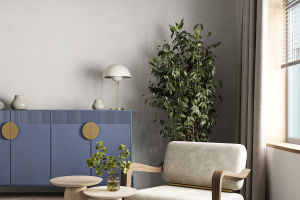Have you ever admired a building that feels like a dazzling jewel from the past yet remains timelessly modern? This is the magic of the Art Deco movement in architecture.
Originating in the early 20th century, Art Deco transformed building design by blending artistic decoration with industrial progress. Today, this movement's impact continues to inspire architects and urban planners worldwide.
Let's dive into the distinctive characteristics and cultural significance of Art Deco in architecture.
Historical Context and Origins of the Art Deco Movement
Art Deco emerged after worldwide transformation, as a response to rapid industrialization and a desire for new expressions of luxury, modernity, and optimism. Rooted in the 1925 Exposition Internationale des Arts Décoratifs et Industriels Modernes held in Paris, the style embraced geometric patterns, symmetry, and rich materials.
Unlike earlier architectural movements that emphasized ornate historicism, Art Deco celebrated streamlined, elegant decoration that symbolized progress and sophistication.
Key Characteristics of Art Deco Architecture
Art Deco architecture is marked by bold geometric shapes, clean lines, and lavish ornamentation. Buildings often feature stepped forms, chevron patterns, sunbursts, and zigzags. Materials such as stainless steel, aluminum, and glass are combined with exotic woods and stones to create a sense of luxury.
The use of vibrant colors and metallic finishes adds to the visual drama. Art Deco bridges functionality with aesthetics, creating spaces that are both practical and artistically rich.
How Decorative Arts Shape Architectural Expression
The Art Deco movement stands out because decoration is not an afterthought—it is integral to the building's identity. Decorative motifs inspired by ancient civilizations, nature, and machine age symbolism are woven into façades, interiors, and fixtures. For example, stylized floral designs or abstract sun patterns enhance walls, doors, and ceilings.
These artistic elements convey a narrative about culture, innovation, and elegance, transforming buildings into immersive works of art.
Iconic Examples of Art Deco Architecture Worldwide
From New York City's Chrysler Building to Miami's Ocean Drive hotels, Art Deco has left an indelible mark on the urban landscape. The Chrysler Building, completed in 1930, is renowned for its stainless steel crown and eagle gargoyles symbolizing speed and power.
Meanwhile, Miami's pastel-colored Art Deco District blends tropical motifs with modernist principles. Each example reflects local culture and climate while adhering to the global Art Deco style, showing its versatility and enduring appeal.
Art Deco's Influence on Contemporary Architecture and Design
While the peak of Art Deco passed by the mid-20th century, its influence continues today. Contemporary architects draw inspiration from its geometric clarity and ornamental richness to create buildings that balance tradition and innovation.
Moreover, the revival of Art Deco aesthetics in interior design, fashion, and graphic arts demonstrates the movement's lasting cultural significance. This resurgence reminds us of the power of decoration to elevate everyday spaces.
Challenges and Critiques: Preservation in a Modern World
Preserving Art Deco architecture poses challenges in modern urban development. Some argue that the emphasis on decoration can lead to higher costs and maintenance issues. Additionally, rapid urbanization threatens many historic Art Deco buildings.
However, heritage conservation efforts emphasize that these structures are vital cultural assets, offering insights into early 20th-century values and artistic creativity. Balancing modernization with preservation remains a key concern for cities worldwide.
Why Art Deco Matters to You
Whether you are a casual observer or a design enthusiast, Art Deco architecture offers a unique window into an era of optimism, creativity, and transformation. It challenges us to consider how beauty and function can coexist in the built environment.
Next time you see an Art Deco building, take a moment to notice the details—from the patterns to the materials—and appreciate how decorative art can shape our daily surroundings.
Conclusion: A Legacy of Decorative Elegance
Art Deco architecture represents more than a style; it is a philosophy of design that marries decoration with innovation. Its bold forms and intricate details continue to inspire architects and captivate admirers worldwide.
By understanding and preserving this movement, we maintain a vital connection to cultural history and remind ourselves of the power of art in shaping human experiences.
What are your favorite examples of Art Deco architecture? Have you ever encountered a building that made you stop and admire its decorative artistry? Share your thoughts and stories!


